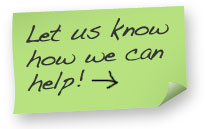[Big Ideas is an occasional series on valuable resources—NOT a summary, but a focus on ideas that speak to us.]
Tell a story people you care about already believe is true.
That’s Seth Godin’s obsession in All Marketers are Liars, and I think he’s right.
Why does he believe this? Because he also believes you can’t change anyone’s mind. Hold on—I know. You’re already coming up with counter examples. But in our facts-are-relative, everyone-in-their-own-echo-chamber world, new info you believe depends on your worldview. It shouldn’t. It makes me sad to write that. But it’s true. Think global warming, benefits of Twitter, Republican versus Democratic views of “the American Dream,” quality of American (or Korean or Chinese) Cars, birthers, or almost any of the popular “The Death of…” blog posts.
I’m big on exposing my biases, so I’ll add: Godin’s book is the best description I’ve seen for how we select target markets for clients and create tailored messages. My glib phrase for this: “Who do I sell to and what do I say?” It’s all about finding people who resonate with your value and telling those people, in their words, how life will be better after adoption. You can make a darn good living in Marketing if you remember that.
 Does this mean no one accepts new ideas? Of course not. It means accepted new ideas must fit an existing world view. Books like The Three Laws of Performance (a good book and topic for another day) imply you can change people’s mind dramatically—almost taunting you to ignore your audience’s worldview. It won’t work. Sure, folks change their mind, but they change their mind when a story builds on what they believe, but ends in a new way. Jumping to step 2 (change) before a grounding in step 1 (current worldview) reminds me of the joke in the movie Desperately Seeking Susan: “I bought some sushi the other day. I took it home and cooked it. It tasted like fish.”
Does this mean no one accepts new ideas? Of course not. It means accepted new ideas must fit an existing world view. Books like The Three Laws of Performance (a good book and topic for another day) imply you can change people’s mind dramatically—almost taunting you to ignore your audience’s worldview. It won’t work. Sure, folks change their mind, but they change their mind when a story builds on what they believe, but ends in a new way. Jumping to step 2 (change) before a grounding in step 1 (current worldview) reminds me of the joke in the movie Desperately Seeking Susan: “I bought some sushi the other day. I took it home and cooked it. It tasted like fish.”
- iPad doesn’t convince you a laptop without a keyboard is good. It reminds you how much you love your smartphone and taunts you with the joy of a larger screen.
- McDonalds doesn’t tell you they make great burgers. They assure you any McDonalds will give you the comfort of getting what you expect.
- Cisco router specs don’t build brand loyalty. They build on their networking reputation to deliver “The Human Network.”
- Nike rarely claims better shoes. They logo alone screams “By athletes. For athletes.”
Weave a brilliant story about the value of behavior change—based on what your audience already believes.
And…don’t let “Liars” in the title bother you. It’s there to sell books. Dive in for a swim in the conviction that (1) stories are king—facts are useful, but only as the structure for a really good story. And (2) your audience already believes your story. They just don’t know it yet. Sew together your stories from the million stories already in their mind and you win.
Staying with the title a moment, that “Liars” word in All Marketers are Liars made my colleague nuts. It’s not that she’s not superb at positioning, but she hates negative twists—even intentional ones: “Liars? Why not storytellers?” she asked. Turns out 2/3 of the way through, Godin says:
“I bet you’re wondering why I called this book All Marketers are Liars, instead of the more accurate All Marketers are Storytellers. It’s because nobody would hate that book. No one would argue with it and it wouldn’t stand out.”
Run to edges. Keep your story extreme. Only speak to the small subset who agree with you and let them spread the word.
Takeaways
- Know your audience to understand their beliefs and needs
- Speak to your audience’s worldview even if you ignore (or annoy!) people outside your target audience
- Weave facts into a story. Ask yourself: “After someone leaves a meeting with me, what does s/he tell colleagues?” If your story isn’t memorable enough to work without you being there, you’re not done.
- Ideas are great, but HOW? Want an entertaining video course taking you step-by-step through creating YOUR story for YOUR people? Click here to get started.





